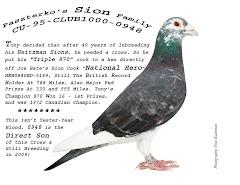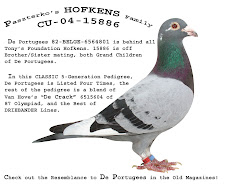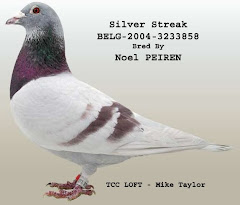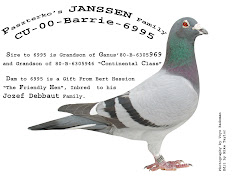The Toronto Star
Wednesday January 12, 2011
Katie Daubs
Staff Reporter
Manny De Medeiros displays one of the prize giant runt pigeons he raises with his father, Manny Sr.
By day, Manny De Medeiros is surrounded by the tailored suits of Bay Street.
By night, he is all pigeon.
De Medeiros and his father have been breeding giant runt pigeons for 30 years near Dupont St. and Lansdowne Ave. They are plump, clumsy birds too big to fly, but not to amble.
“I fell in love the first time I saw them. It’s a part of me I can’t let go,” De Medeiros says. Thirty nine years old, he still remembers the day back in 1982 that he bought a pair of hefty show birds out of the back of a truck.
De Medeiros, who works in technology at the Bank of Montreal, keeps his pigeons at his father’s house in the west end. It’s a hobby that requires more time than anything, which is one of the reasons he’s likely the only practicing pigeon fancier on Bay Street.
“Sometimes I tell them (my coworkers) I’m going to a show in the U.S. and they say, ‘A muscle car show?’”
Pigeons are a public relations challenge. Many people consider the birds street vermin. De Medeiros has been asked, more than a few times whether he’s breeding them for a hearty meal. Others accuse the pigeons of pooping beyond his father’s property line.
De Medeiros says that’s impossible.
“I can’t let my birds out. They’d get demolished by predators,” he explained.
City bylaws say residents can keep pigeons as long as they don’t stray perch or roost outside of the owner’s property. Like all animals in the city, they must live in sanitary conditions. The elder De Medeiros, also named Manny, spends four hours a day in the backyard pigeon loft feeding and cleaning. The loft takes up a good portion of the garage. It has an outdoor run, large cages for breeding and a small room for young pigeons to strut freely. It looks like a cross between a veterinarian’s office and a workshop. It doesn’t smell like there are 74 birds inside its walls.
Stacks of photos in the De Medeiros home show off scenes of Portugal, the family’s homeland. Others show nieces and nephews in their wedding finery. Others show robust pigeons.
Manny Sr. is filled with effusive phrase for all three.
“Beautiful,” he says.
His eyes are wide as he goes back and forth to the cabinet to showcase the various medications he stocks for the pigeons. Some are for aching joints, others for colds and parasites.
He leafs through his 1977 pigeon manual and points at each bird and smiles. Then, a picture of a red giant runt falls out from between the pages.
He beams at the memory.
“He’s the best,” he says.
When the father and son duo started showing the birds, they belonged to the Ontario Giant Runt Club, on Brock Ave.
If you walk into the club these days, you will find Joe Jesus and a few other retired men watching television and talking pigeons in the cluttered clubhouse. The walls are filled with large composite picture frames, the kind a grandmother would use to showcase her grandchildren. Inside the oval mats of these picture frames, however, are old photographs of beady-eyed birds.
The group has one show a year and don’t stray too far from home.
Jesus has raised pigeons since he was a little boy. His strategy is simple.
“It’s not secret. Feed ‘em nice, treat ‘em nice, make them good friends.”
Jesus said keeping pigeons is an aging hobby, and some of the members have died, “like me pretty soon,” he jokes.
De Medeiros left from the Ontario Giant Runt Club and formed the Giant Runt Club of Canada in 1993, with the aim of holding more shows, and travelling abroad. He has breeders from the GTA and southern Ontario. Their annual show is happening on January 22 at the Brampton fairgrounds.
The poop on giant runt pigeons
The giant runt breed has been around since the days of Imperial Rome, when they were known as banquet pigeons. The English started calling them “runt” and the Americans added the “giant” when the birds came across the Atlantic with European settlers. Initially used for food, Americans turned them into show birds when they crossbred them with other strains of pigeon, he explained.
The breed is not as popular as racing homers, powders, or fantail pigeons. They are a challenge because of their size. Breeding is especially difficult.
To win a trophy, a giant runt must have a broad head, a beak of medium length, bright eyes and a full breast for a robust look. Many of the birds weigh between three and four pounds.
The De Medeiros family has won hundreds of prizes in Canada and the U.S for their birds. And while he’d never give away a champion bird, the elder De Medeiros has been known to offer a trophy to a curious visitor, regardless of their pigeon prowess.
Read more ...















